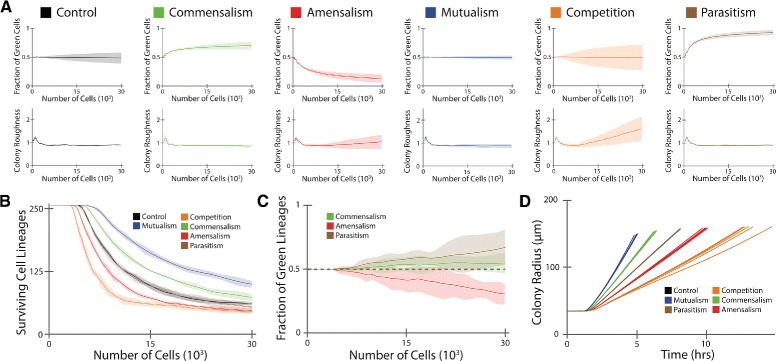Fig. 4.

Statistical analysis of the role of social interactions in determining community structure. a Relative species abundance (the fraction of green cells) and colony roughness as functions of total cells in the population. The solid lines correspond to the mean values, and the shaded regions reflect two standard deviations. The statistics were obtained from six runs of simulations. b The number of surviving lineages as a function of total cells. Communities with deleterious interactions (amensalism and competition) have a faster decay of lineage number compared with control (neutralism), in contrast, those with beneficial interactions show a slower lineage decay. Control and parasitism have nearly indistinguishable plots. c Fraction of green lineages in total lineages. d Colony radius as a function of time for all 36 simulations runs. Differential colony expansion rates were observed for communities with different interactions. Control and parasitism have nearly indistinguishable radial expansion due to similar overall growth rates
